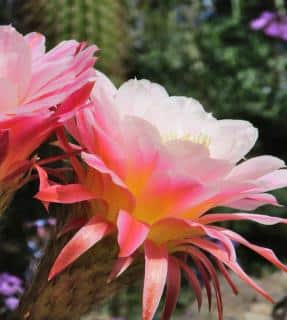

Many cactus plants are considered extremely appealing to decorate the inside of our apartments and homes. It may be unexpected, but these growing conditions offer great potential for cactus flowers to appear.
Surprisingly, nearly 70% of the most common types of cactus can bear amazing blooming.
 A time of dormancy is required. At the end of this period, usually after winter, beautiful flowers will appear in many shaped and colors depending on the type of cactus plant you’re caring for.
A time of dormancy is required. At the end of this period, usually after winter, beautiful flowers will appear in many shaped and colors depending on the type of cactus plant you’re caring for.
Some cactus species will bear flowers that only last a single day or night. Others will bear only a single flower in their lifetime. The great majority will bear flowers multiple times, and they can last quite a while, too!
 The saying goes that to make a cactus bloom, you need to recreate the harsh environment it usually encounters in its natural growing environment.
The saying goes that to make a cactus bloom, you need to recreate the harsh environment it usually encounters in its natural growing environment.
Two rules you must follow for your cactus to flower are the dormant period and a complete lack of water during this time.
Most cactus are plants that tend to live in dry, arid portions of the globe. They expect to spend many months without collecting a single drop of rain.
 Don’t water at all during the 6 coolest months of the year (usually October to March in the Northern Hemisphere, March to October in the Southern hemisphere).
Don’t water at all during the 6 coolest months of the year (usually October to March in the Northern Hemisphere, March to October in the Southern hemisphere).Here are a few special tips a professional cactus grower shares to help a cactus bloom:
Read on about cactii:
Note that keeping cactus plants in a bedroom isn’t a problem at all. Indeed, it tends to release more oxygen than it does carbon dioxide, unlike most other houseplants.